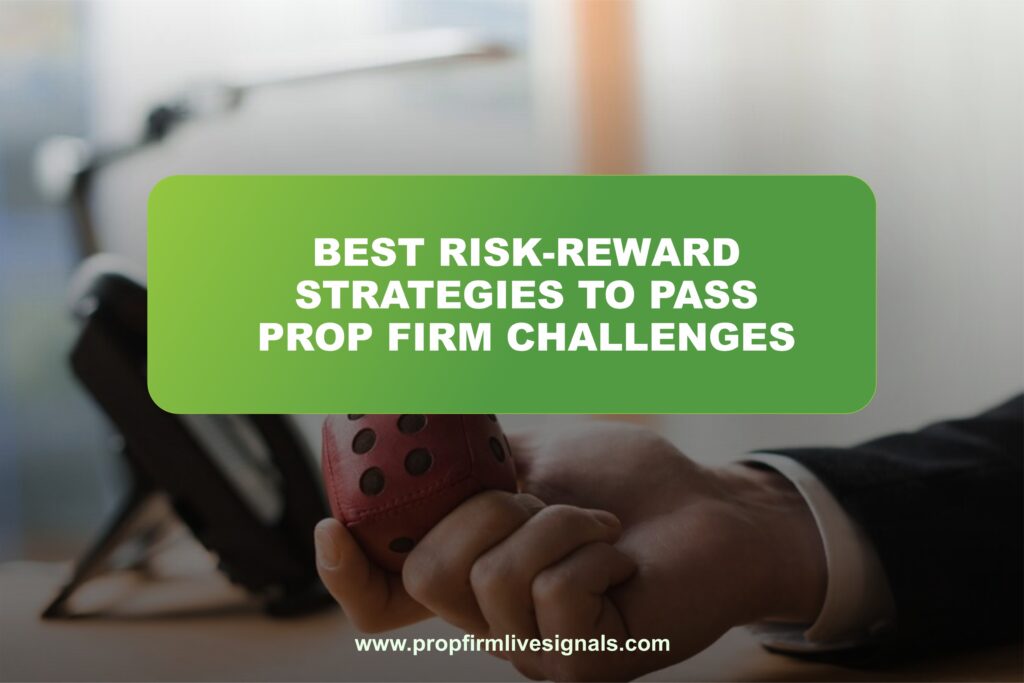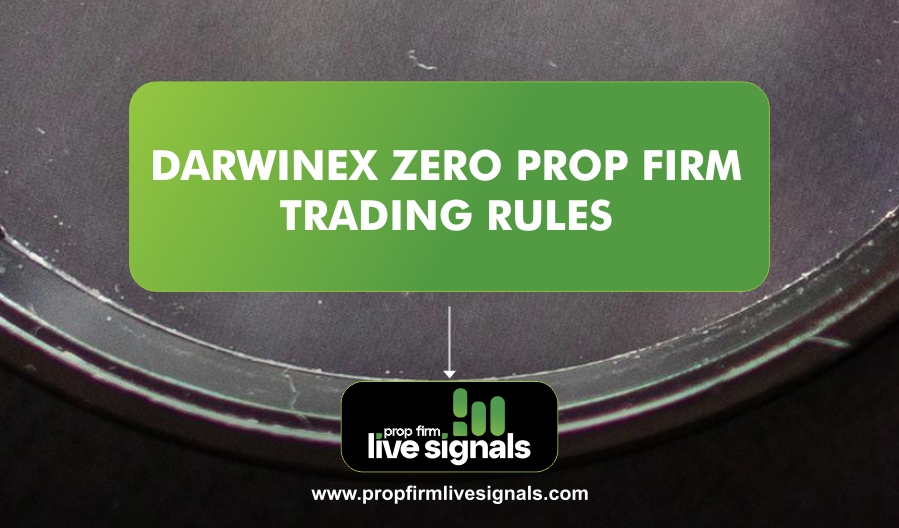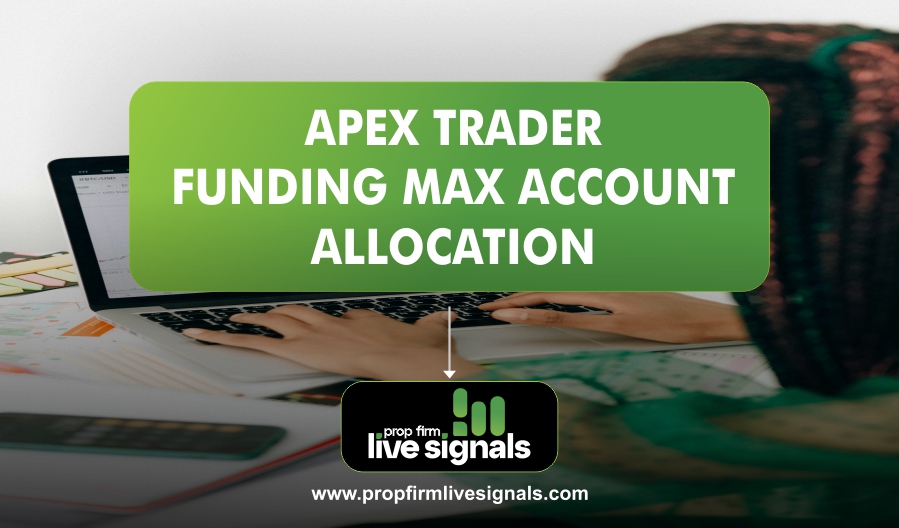Prop firm challenges provide the unique opportunity to manage capital without risking personal loss, although stringent requirements placed on traders put both skill and discipline to the test.
This article looks at some effective risk-reward strategies that will help boost your chances of passing those challenges in style.
Understanding Prop Firm Challenges
Prop firm challenges are pre-structured assessments set by a prop trading firm for traders, which demonstrate the trader’s capability to handle risk and produce profits effectively.
Unlike in traditional trading accounts where traders use their own capital, in prop firms, they provide capital to the successful traders who split the profits and minimize personal financial risk.
Most of those challenges include specific profit goals within certain periods with strict drawdown limits and trading rules.
Key Components of Prop Firm Challenges
Before diving into a prop firm challenge, it’s crucial to arm yourself with the proper knowledge and mindset to trade efficiently. Here’s what you need to know:
Profit targets: Each challenge has its minimum profit target that one must achieve to pass the test. This largely depends on the firm, but it’s usually set within 10% of the initial capital.
Drawdown Limits: These limits define the maximum loss a trader can incur before failing the challenge. A simple example would be that, with a trading account of $100,000 and having a drawdown limit of 10%, you cannot lose more than $10,000.
Trading Rules: Firms may impose restrictions on the types of trades you can execute, the instruments you can trade, and even the times during which you can trade.
Evaluation Criteria: Other than profitability, the firms would look for consistency in performance, following risk management protocols, and rules adherence, especially when under pressure.
Developing a Risk-Reward Strategy
Success with prop firm challenges entails a properly defined risk-reward strategy. Such a strategy encompasses all risk management principles, trading psychology, and incorporates a well outlined trading plan.
1. Establishing Risk Management Protocols
Effective risk management is the foundation of any trading strategy that works. Following are the key considerations:
Position sizing: a predetermined amount of money that you will risk on any single trade. A very basic rule is not to risk more than 1% of your total account balance on one trade. It keeps your capital safe from some big losses and also allows you to sustain multiple losses one after another.
Setting Stop-Loss Orders: Always set stop-loss orders in order to limit potential losses for each trade. It ensures that one exits losing positions before they escalate into larger losses.
Daily Loss Limits: Establish personal daily loss limits that align with the firm’s drawdown rules. For instance, if your challenge allows a 10% drawdown, set your daily loss limit at 2% or 3% of your total capital to avoid hitting the maximum loss too quickly.
2. Focusing on Consistent Performance
Consistency in performance is more valuable than chasing high-risk trades for quick profits. Here’s how to maintain consistency:
Break Down Profit Targets: If your challenge requires a 10% profit over a month, break this down into smaller daily or weekly goals. For example, aim for 0.5% profit per day or 2% per week. This approach reduces pressure and helps maintain focus on steady gains.
Not Overtrading: Stay on course with your trading plan and avoid taking unnecessary trades out of boredom or frustration. Overtrading leads to emotional decision-making that often can result in great losses.
Review and Adjust: Go through your trades regularly and performance metrics. Analyze what works and what doesn’t; adjust the strategy accordingly, but don’t stray away from the core of your plan.
3. Understanding Trading Psychology
Psychological resilience plays a critical role in successful trading, especially under the pressure of prop firm challenges:
Cultivate Emotional Discipline: Maintain composure during both winning and losing streaks. Emotional trading often leads to impulsive decisions that can jeopardize your progress in the challenge.
Practice Mindfulness Techniques: Techniques such as meditation or deep breathing can help manage stress levels during volatile market conditions, allowing for clearer decision-making.
Let go of outcomes: Instead of concentrating on the results of individual trades, think about the proper execution of your strategy. This largely helps minimize stress over reaching profit targets.
4. Employing tested trading strategies
One needs to have an effective trading strategy tested for the competition:
Testing Your Strategy: Backtest your strategy before entering the challenge in all kinds of market conditions. Analyze the key metrics such as the win/loss ratio and average return per trade.
Forward Testing in Demo Accounts: Do some forward testing in demo accounts after backtesting, which will simulate real market conditions without actual capital exposure. This builds confidence in executing your strategy under pressure.
Don’t Change Strategy: One or two proven strategies are enough and worth one’s commitment, assuming these meet the firm’s requirements. Hence, there is no need to experiment with new ones during the challenge period.
Navigating Common Pitfalls
Beyond bettering the probabilities of success in prop firm challenges, it is important to take note of common pitfalls and ways to get around such pitfalls:
Ignoring Firm Rules: Familiarize yourself with all regulations set by the prop firm before starting the challenge. Even minor breaches can lead to disqualification.
Inconsistent Strategy Application: Frequently changing strategies can result in erratic performance that does not meet evaluation criteria. Commit to your chosen strategy unless significant market changes necessitate an adjustment.
Too Much Leverage: Too much leverage will increase losses very quickly, which may disallow the challenge. Stay with conservative leverage ratios that allow for reasonable growth without putting too much capital at risk.
Revenge Trading: If you reach your daily loss limit or have a few losing trades consecutively, then try to avoid making impulsive trades in an attempt to recover losses as fast as possible. Take a few steps back, revise your strategy, and come back only when calm and focused.
Building a Supportive Trading Environment
Building an ideal trading environment can make a great difference in performance in prop firm challenges:
1. Creating a Routine
Establishing a regular trading routine helps to strengthen one’s discipline:
Trade During Peak Hours: The London and New York sessions represent times of high market liquidity where price movements are more predictable.
Steer Clear of Major News Events: This may create unpredictable volatility; if you’re not comfortable with this kind of risk, don’t trade during a major economic announcement.
2. Leveraging Technology
Leverage better technology to enhance analytics and execution:
Leverage Charting Software: Leverage sophisticated charting software and technical indicators to enhance the market analytics process.
Automate Where Possible: Consider, if the firm rules allow, the deployment of automated trading systems or algorithms that support the management of trades based on pre-set criteria while minimizing emotional interference.
Preparing for Long-Term Success
The passing of a prop firm challenge is not an end but rather the beginning of ongoing education and adaptation to achieve long-term success as a trader:
1. Always Be Learning
Keep your finger on the pulse of market trends and constantly hone your skills:
Join Trading Communities: Participate in a forum or group where traders share ideas and strategies. Learning about other approaches can add new dimensions to your approach.
Attend Workshops / Webinars: Attend classroom training teaching advanced trading techniques or psychological resilience training specifically for traders.
2. Performance Reflection
Regularly reflect on both technical performance and emotional state :
Daily Reviews: Use the last moments of every trading day to review the trades made, emotions experienced during these trades, and also how well the plan was followed.
Alter Strategies Where Necessary: Have the willingness and adapt strategies based on performance reviews while keeping core principles intact on risk management and discipline.
Want to take your trading to the next level?
Take advantage of our LiveSignals, your go to resource for dependable, real-time trading signals, you can eliminate uncertainty from trading.
Propfirmlivesignals is the answer to your constant success in the markets!
You will always be on top of your game with expert analysis and real-time updates. Never let this chance slip away to supercharge your trading journey.
More Info Click here.
Frequently Asked Questions (FAQs)
What is the role of emotional discipline in trading?
- Emotional discipline helps him to stay focused and rational under tension. Building a growth mindset, being detached over one’s trades, and increasing mindfulness in negative situations will contribute to better performance.
How can I improve my consistency as a trader?
- Consistency Improvement.
- Regularly schedule your time to trade along with good liquidity in the market.
- Do not trade during major news unless you have a specific strategy to trade.
- Daily reviews of your performance for monitoring, monitoring, and adjusting your strategy according to changes.
Are there particular tools or technologies available that can support trading?
Yes, there are quite a few tools to maximize your trading performance:
- Automated Trading Systems: Can allow execution of trades based on specific criteria with least emotional influence.
- Advanced Charting Software: Better technical analysis with clearer visualization of market trends.
- Trade Journals: Keeping detailed records of trades helps identify patterns and areas for improvement.
What do I do if I achieve my drawdown limit during the challenge?
- When you reach your drawdown limit, you must stop immediately and go back to the drawing board. Give yourself time to think through what went wrong and change your approach if needed, take a break and cool down so that your next step will be rational.
Can I employ more than one strategy during the challenge?
- Yes, you can use more than one strategy; however, it’s always good to identify one or two tried and tested methods that suit the requirements of the challenge. Focus is critical to maintaining consistency and ensuring you are able to hone your method without feeling overwhelmed.
How long does a prop firm challenge usually last?
- The challenges are different with each prop firm, and the time scale can range from a few weeks up to several months. During this period, traders will have to achieve their profit targets while not exceeding the drawdown limits.




